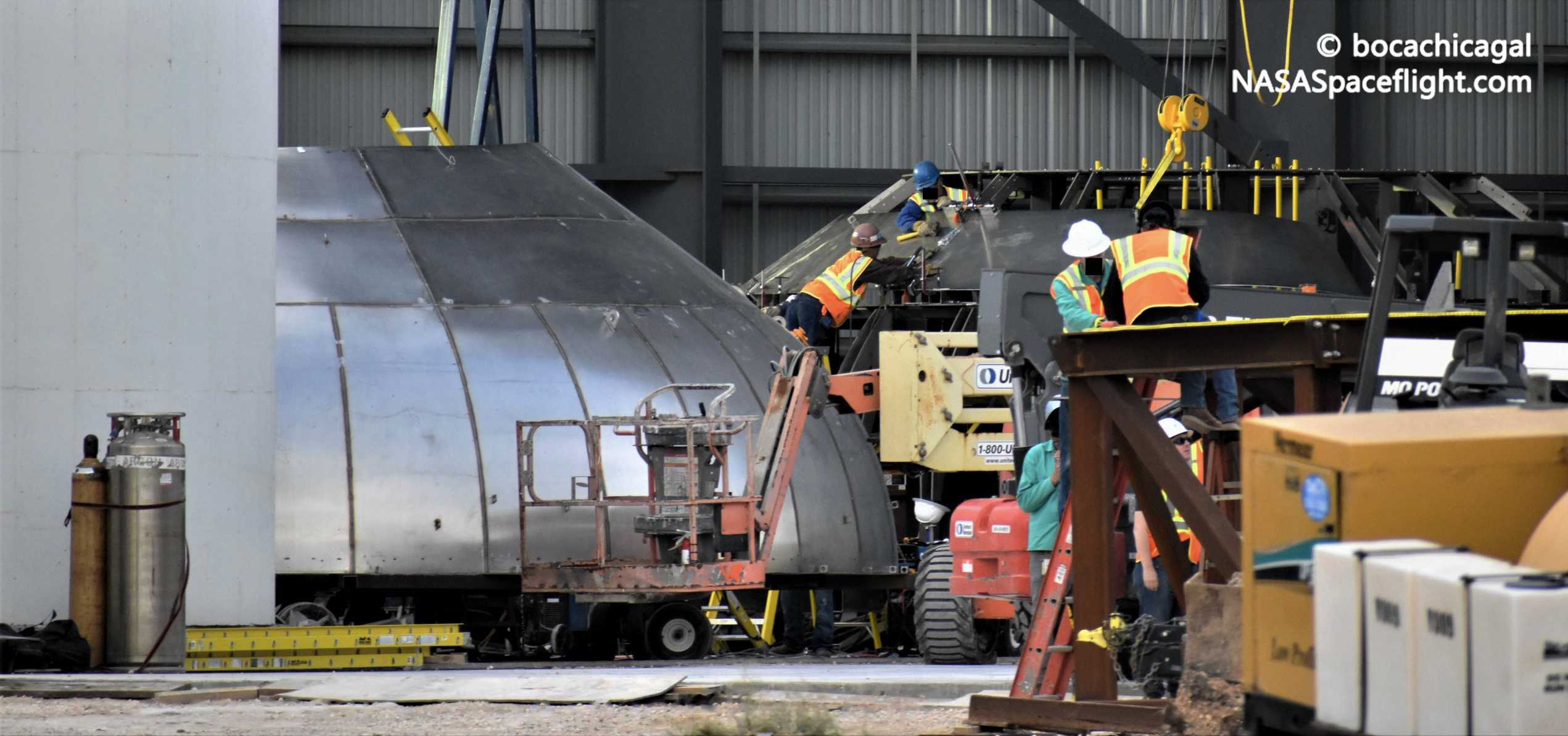
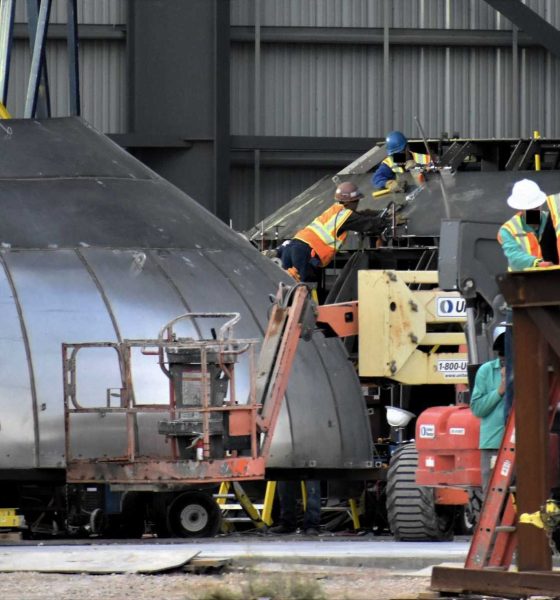
News
SpaceX's Elon Musk works through holidays on Starship's "most difficult part"
SpaceX CEO Elon Musk says he has been working through the holidays at the company’s Boca Chica facilities to get Starship’s “most difficult part” ready for the next-generation spacecraft’s next prototype and flight tests.
Known as tank domes or bulkheads, Musk says that the hardware is the most difficult part of building and assembly Starship’s primary structure, referring to the steel engine section, tanks, and pointed nose that comprise most of the spaceship’s body. Starship’s primary structure must stand up to the rigors of all aspects of flight, including highly-pressurized propellant tanks, extreme G-forces during launches, orbital reentry, and more.
It was never officially determined whether the failure was intentional or not but during the first Starship prototype’s (Mk1) last test campaign, the vehicle experience an overpressure event while being filled with liquid oxygen or nitrogen. Localized to the weld connecting the upper tank dome to Starship’s cylindrical tank section, the dome essentially sheared off at the weld and launched hundreds of feet into the air, sending a shockwave through the vehicle that crumpled many of its steel structures as if they were aluminum foil.
It’s likely that Starship Mk1’s failure was an intentional overpressure event, meaning that SpaceX may have purposely pressed the vehicle’s tanks beyond their design limits to determine how structurally sound they were. What is less clear is whether the rocket burst before or after reaching its theoretical design limit.
For reference, SpaceX’s Falcon 9 rocket operates with its fuel and oxygen tanks pressurized to about 50 psi (3.5 atm) with localized pressures likely doubling or tripling near the bottom of both tanks during the first minute or two of launch. Some amateur back-of-the-envelope calculations from videos of Starship Mk1’s burst event suggest that it was pressurized to at least 60-75 psi (4-5 atm) at its upper tank dome, meaning that the pressure on its two lower domes and tank walls would have been even higher. If correct, those unofficial figures mean that Mk1 actually performed quite well considering the ramshackle facilities and unprecedentedly spartan methods used to fabricate and assemble it.
As such, Musk likely considers Starship’s tank domes the “most difficult part of [its] primary structure” in large part because of how difficult it is to make giant propellant tank domes simultaneously light and strong. Musk has previously implied that Starship Mk1 was more 200 tons (450,000 lb) empty while the ultimate goal for the spacecraft’s empty weight is closer to 120 tons, and a large portion of that weight savings will likely have to come from making its tank domes as light as possible.
In line with that educated speculation, the last month or so of SpaceX’s Starship work in Boca Chica, Texas has been marked by a distinct focus on building tank domes. In fact, Musk himself tweeted that he had worked all night with SpaceX engineers in Boca Chica in a bid to get dome production ready for Starship’s Mk3 prototype, the first Super Heavy hardware, and many more rockets to come.
Prior to Musk’s tweet, a Starship tank dome was actually shipped all the way from Florida to Texas and arrived earlier this month. Meanwhile, technicians have been briskly building up an additional dome using what appears to be a different method of integration involving new parts. SpaceX is currently attempting to weld Starship’s tank domes together from several dozen pre-formed sheets of stainless steel.
The sheets of steel assembled into the dome Musk showed on December 27th likely arrived in Boca Chica on December 13th, implying that SpaceX has managed to complete the majority of the first dome prototype – using a new process – in barely two weeks.

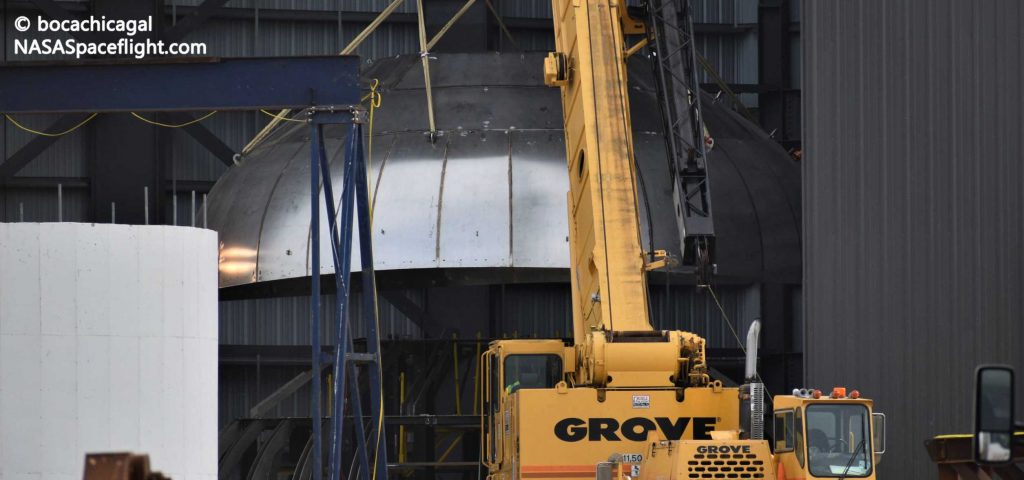
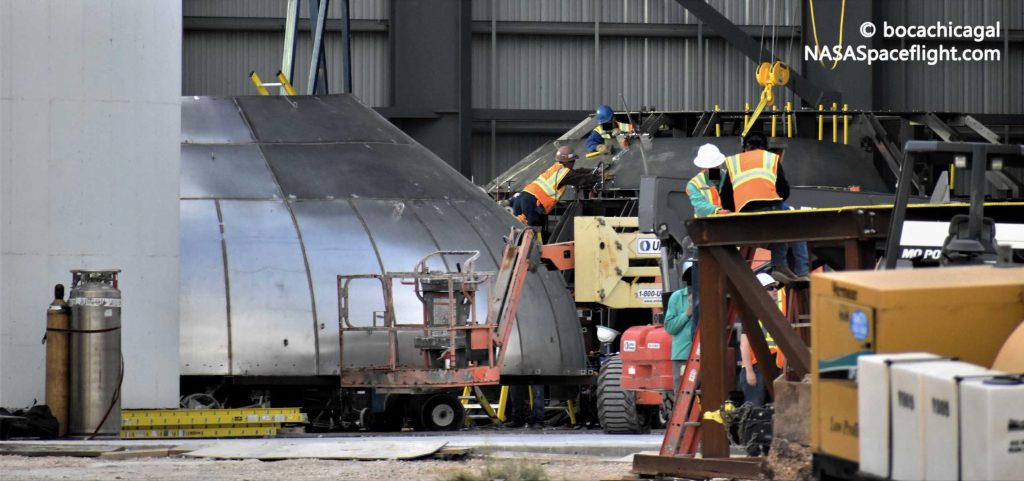
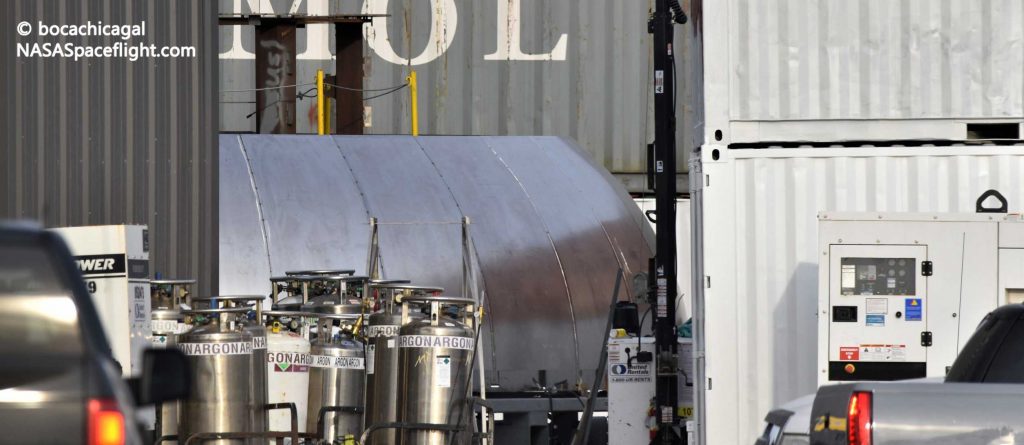
After SpaceX lifted the partially-completed dome off one of its custom assembly jigs, workers almost instantly began staging new sections of steel, beginning the process of integrating yet another tank dome – now likely the fourth on-site in Boca Chica. Meanwhile, at a nearby section of SpaceX’s Boca Chica production facilities, yet another dome was visible on the 28th. In short, SpaceX should soon have more than enough tank domes to complete the next Starship prototype – said to be a significantly improved and refined design compared to Mk1.
Known as Starship Mk3 (or Starship SN01), Musk says that the rocket – currently just a miscellaneous collection of separate parts – could (“hopefully”) be ready for its first flight as soon as February or March 2020.
Check out Teslarati’s Marketplace! We offer Tesla accessories, including for the Tesla Cybertruck and Tesla Model 3.

News
Nvidia CEO Jensen Huang explains difference between Tesla FSD and Alpamayo
“Tesla’s FSD stack is completely world-class,” the Nvidia CEO said.

NVIDIA CEO Jensen Huang has offered high praise for Tesla’s Full Self-Driving (FSD) system during a Q&A at CES 2026, calling it “world-class” and “state-of-the-art” in design, training, and performance.
More importantly, he also shared some insights about the key differences between FSD and Nvidia’s recently announced Alpamayo system.
Jensen Huang’s praise for Tesla FSD
Nvidia made headlines at CES following its announcement of Alpamayo, which uses artificial intelligence to accelerate the development of autonomous driving solutions. Due to its focus on AI, many started speculating that Alpamayo would be a direct rival to FSD. This was somewhat addressed by Elon Musk, who predicted that “they will find that it’s easy to get to 99% and then super hard to solve the long tail of the distribution.”
During his Q&A, Nvidia CEO Jensen Huang was asked about the difference between FSD and Alpamayo. His response was extensive:
“Tesla’s FSD stack is completely world-class. They’ve been working on it for quite some time. It’s world-class not only in the number of miles it’s accumulated, but in the way it’s designed, the way they do training, data collection, curation, synthetic data generation, and all of their simulation technologies.
“Of course, the latest generation is end-to-end Full Self-Driving—meaning it’s one large model trained end to end. And so… Elon’s AD system is, in every way, 100% state-of-the-art. I’m really quite impressed by the technology. I have it, and I drive it in our house, and it works incredibly well,” the Nvidia CEO said.
Nvidia’s platform approach vs Tesla’s integration
Huang also stated that Nvidia’s Alpamayo system was built around a fundamentally different philosophy from Tesla’s. Rather than developing self-driving cars itself, Nvidia supplies the full autonomous technology stack for other companies to use.
“Nvidia doesn’t build self-driving cars. We build the full stack so others can,” Huang said, explaining that Nvidia provides separate systems for training, simulation, and in-vehicle computing, all supported by shared software.
He added that customers can adopt as much or as little of the platform as they need, noting that Nvidia works across the industry, including with Tesla on training systems and companies like Waymo, XPeng, and Nuro on vehicle computing.
“So our system is really quite pervasive because we’re a technology platform provider. That’s the primary difference. There’s no question in our mind that, of the billion cars on the road today, in another 10 years’ time, hundreds of millions of them will have great autonomous capability. This is likely one of the largest, fastest-growing technology industries over the next decade.”
He also emphasized Nvidia’s open approach, saying the company open-sources its models and helps partners train their own systems. “We’re not a self-driving car company. We’re enabling the autonomous industry,” Huang said.
Elon Musk
Elon Musk confirms xAI’s purchase of five 380 MW natural gas turbines
The deal, which was confirmed by Musk on X, highlights xAI’s effort to aggressively scale its operations.

xAI, Elon Musk’s artificial intelligence startup, has purchased five additional 380 MW natural gas turbines from South Korea’s Doosan Enerbility to power its growing supercomputer clusters.
The deal, which was confirmed by Musk on X, highlights xAI’s effort to aggressively scale its operations.
xAI’s turbine deal details
News of xAI’s new turbines was shared on social media platform X, with user @SemiAnalysis_ stating that the turbines were produced by South Korea’s Doosan Enerbility. As noted in an Asian Business Daily report, Doosan Enerbility announced last October that it signed a contract to supply two 380 MW gas turbines for a major U.S. tech company. Doosan later noted in December that it secured an order for three more 380 MW gas turbines.
As per the X user, the gas turbines would power an additional 600,000+ GB200 NVL72 equivalent size cluster. This should make xAI’s facilities among the largest in the world. In a reply, Elon Musk confirmed that xAI did purchase the turbines. “True,” Musk wrote in a post on X.
xAI’s ambitions
Recent reports have indicated that xAI closed an upsized $20 billion Series E funding round, exceeding the initial $15 billion target to fuel rapid infrastructure scaling and AI product development. The funding, as per the AI startup, “will accelerate our world-leading infrastructure buildout, enable the rapid development and deployment of transformative AI products.”
The company also teased the rollout of its upcoming frontier AI model. “Looking ahead, Grok 5 is currently in training, and we are focused on launching innovative new consumer and enterprise products that harness the power of Grok, Colossus, and 𝕏 to transform how we live, work, and play,” xAI wrote in a post on its website.
Elon Musk
Elon Musk’s xAI closes upsized $20B Series E funding round
xAI announced the investment round in a post on its official website.

xAI has closed an upsized $20 billion Series E funding round, exceeding the initial $15 billion target to fuel rapid infrastructure scaling and AI product development.
xAI announced the investment round in a post on its official website.
A $20 billion Series E round
As noted by the artificial intelligence startup in its post, the Series E funding round attracted a diverse group of investors, including Valor Equity Partners, Stepstone Group, Fidelity Management & Research Company, Qatar Investment Authority, MGX, and Baron Capital Group, among others.
Strategic partners NVIDIA and Cisco Investments also continued support for building the world’s largest GPU clusters.
As xAI stated, “This financing will accelerate our world-leading infrastructure buildout, enable the rapid development and deployment of transformative AI products reaching billions of users, and fuel groundbreaking research advancing xAI’s core mission: Understanding the Universe.”
xAI’s core mission
Th Series E funding builds on xAI’s previous rounds, powering Grok advancements and massive compute expansions like the Memphis supercluster. The upsized demand reflects growing recognition of xAI’s potential in frontier AI.
xAI also highlighted several of its breakthroughs in 2025, from the buildout of Colossus I and II, which ended with over 1 million H100 GPU equivalents, and the rollout of the Grok 4 Series, Grok Voice, and Grok Imagine, among others. The company also confirmed that work is already underway to train the flagship large language model’s next iteration, Grok 5.
“Looking ahead, Grok 5 is currently in training, and we are focused on launching innovative new consumer and enterprise products that harness the power of Grok, Colossus, and 𝕏 to transform how we live, work, and play,” xAI wrote.








